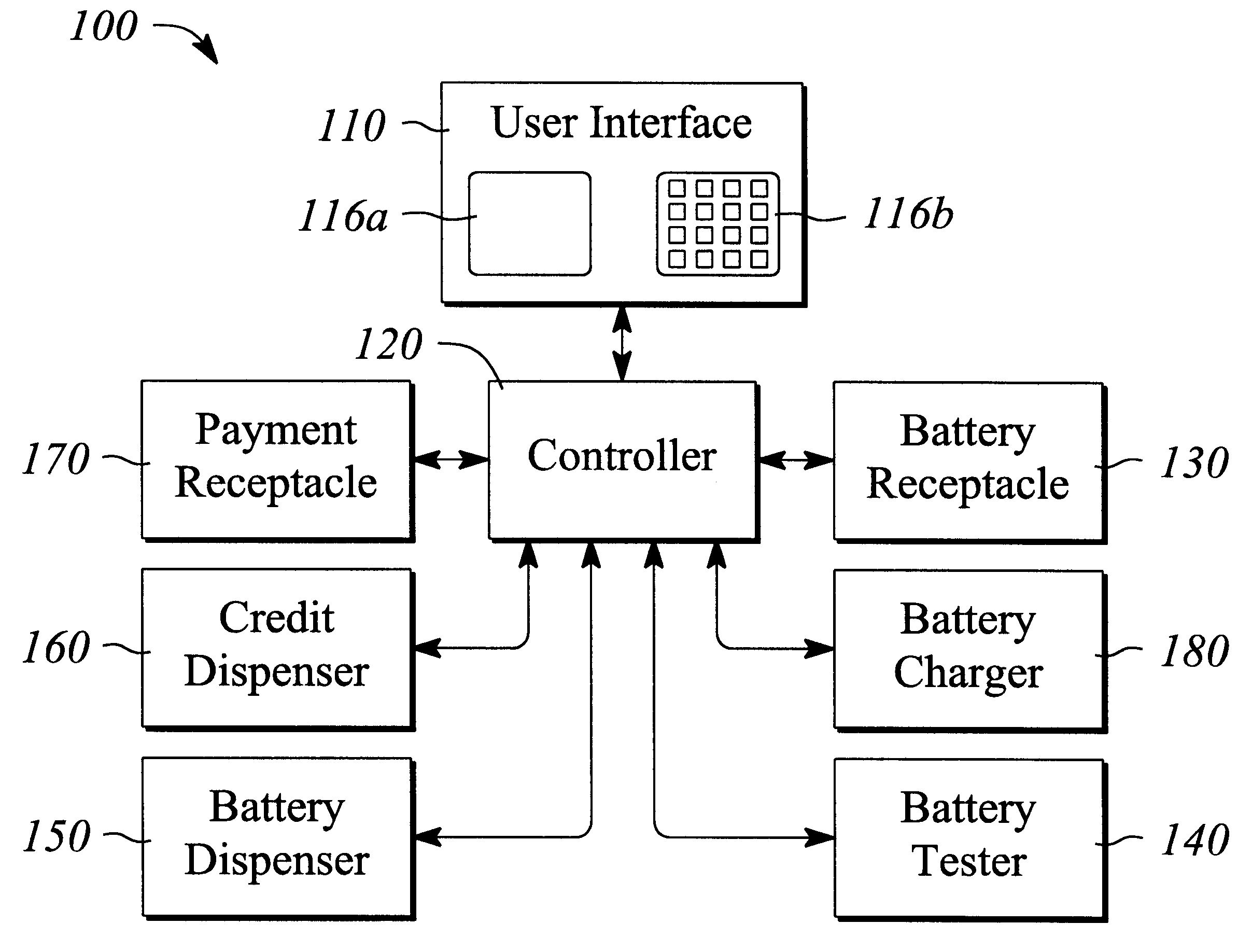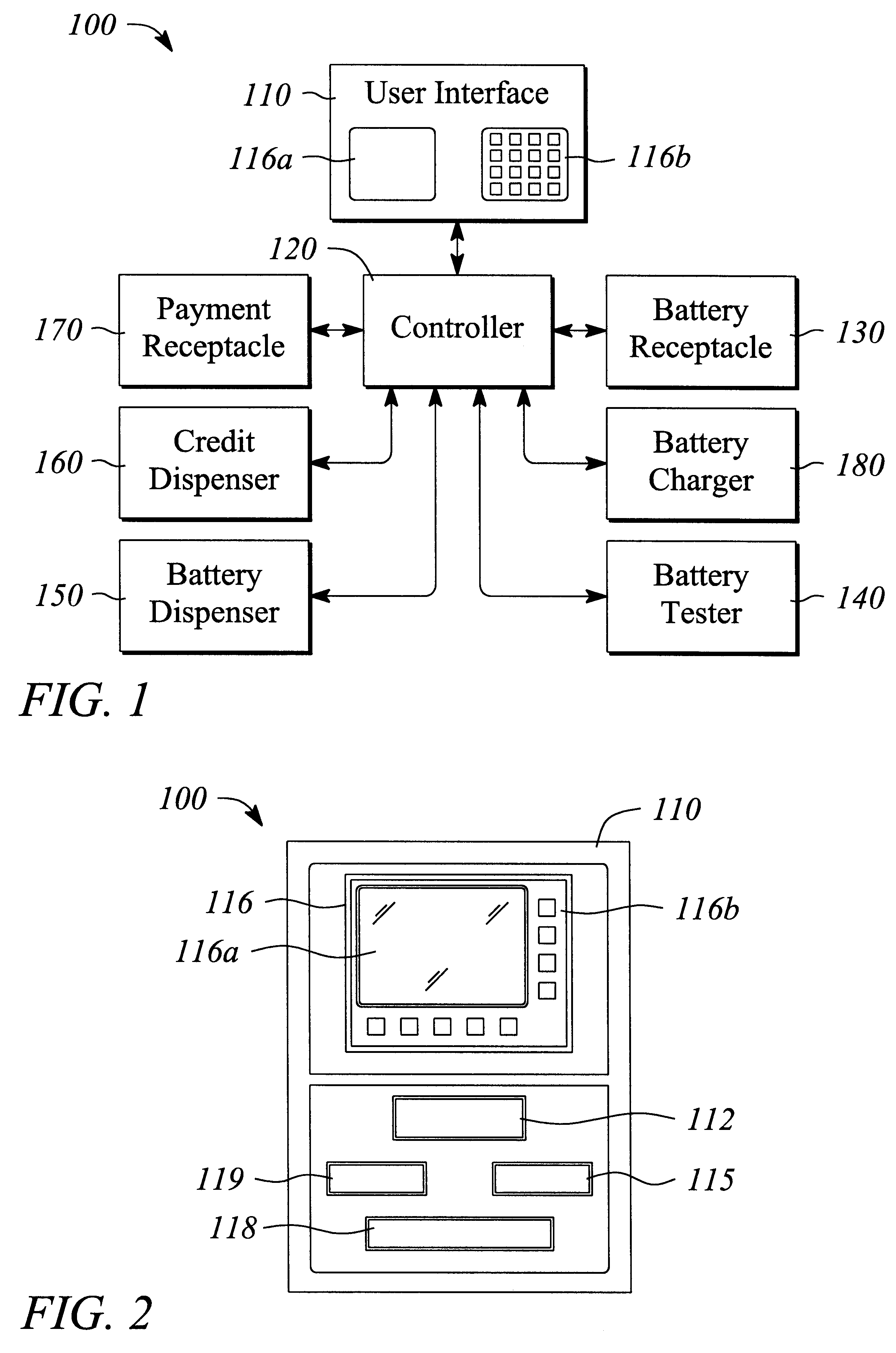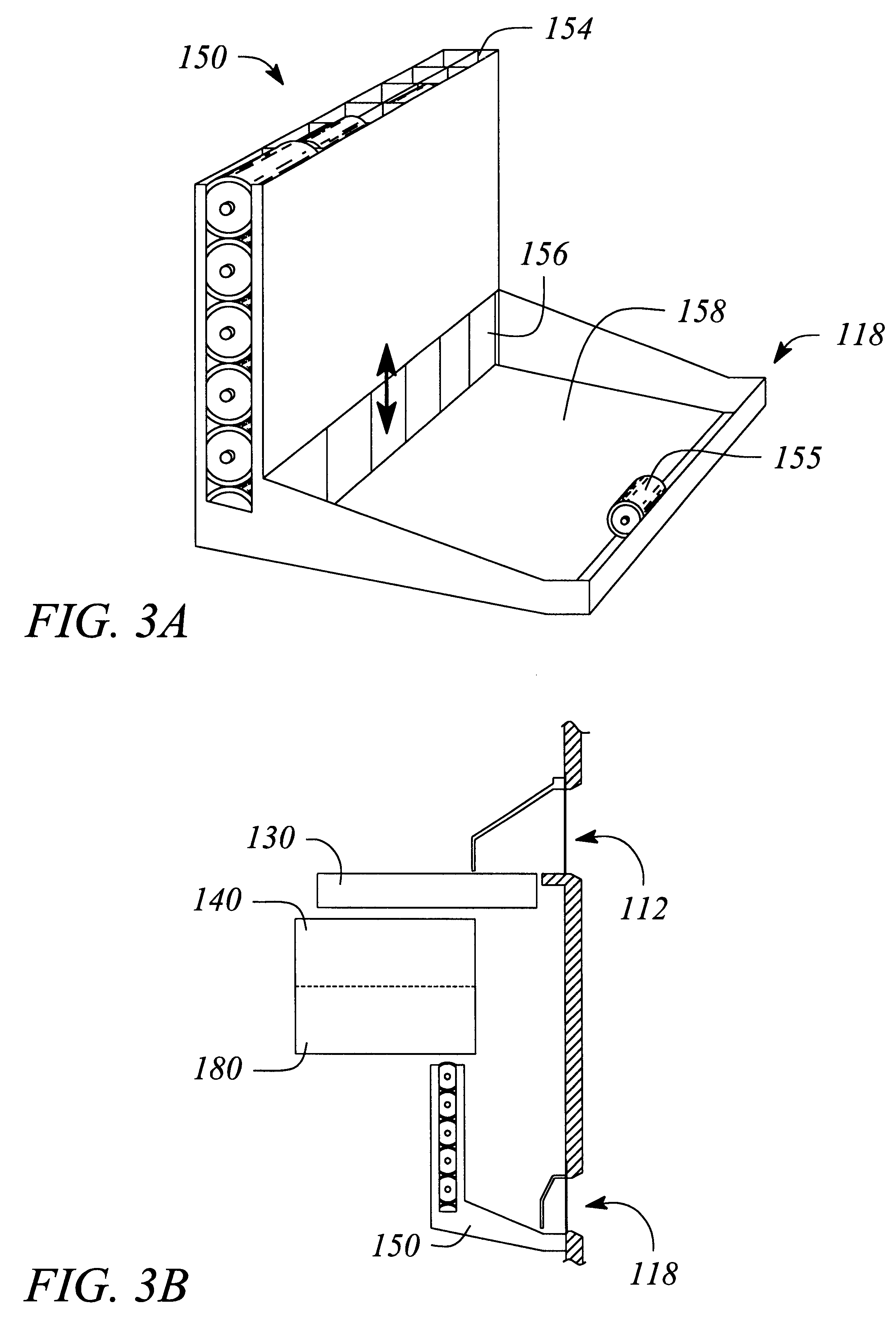Battery recycling
a battery charger and battery technology, applied in the field of battery technology, can solve the problems of high initial cost associated with battery charger purchase, many of these electronic devices would be much less successful, and lose much of their market viability without, and achieve the effect of being readily accessible to the consumer
- Summary
- Abstract
- Description
- Claims
- Application Information
AI Technical Summary
Benefits of technology
Problems solved by technology
Method used
Image
Examples
Embodiment Construction
The apparatus and method of the present invention provide for recycling batteries. In particular, the apparatus is a self-contained battery recycling station, kiosk or vending machine that may be either manned or unmanned. The apparatus can be placed in various locations within a metropolitan area thus providing ready access to the consumer. The method tests the used battery to determine chemistry, rechargeability and condition, assigns a credit value to the used battery, and dispenses one or both of a fully charged battery and credit for the used battery. The present invention accommodates both rechargeable and non-rechargeable batteries. Rechargeable batteries are reconditioned and dispensed for reuse by the consumer as a primary way of recycling. Non-rechargeable batteries and rechargeable batteries that have reached the end of their useful life are stored in the apparatus for latter disposal or recycling of their constituent elements using an appropriate conventional means.
In si...
PUM
 Login to View More
Login to View More Abstract
Description
Claims
Application Information
 Login to View More
Login to View More - R&D
- Intellectual Property
- Life Sciences
- Materials
- Tech Scout
- Unparalleled Data Quality
- Higher Quality Content
- 60% Fewer Hallucinations
Browse by: Latest US Patents, China's latest patents, Technical Efficacy Thesaurus, Application Domain, Technology Topic, Popular Technical Reports.
© 2025 PatSnap. All rights reserved.Legal|Privacy policy|Modern Slavery Act Transparency Statement|Sitemap|About US| Contact US: help@patsnap.com



